Did you know that Ibri houses one of the world’s most complete and well-preserved ancient tomb complexes? Dating back over 4,000 years, the Bat Necropolis is older than many of Egypt’s famous pyramids. This UNESCO World Heritage site is just one of the hidden treasures awaiting travelers in this fascinating oasis town nestled in Oman’s northern Al Dhahirah region.
Getting There & Planning Your Journey
Ibri is located approximately 300 km (186 mi) northwest of Muscat, making it an accessible destination for those exploring Oman’s interior. The town serves as a strategic stopover point between Oman, Saudi Arabia, and the UAE.
By Air
The nearest major airport is Muscat International Airport. From there, you’ll need to arrange ground transportation to reach Ibri. Check flight options to Muscat from your location to begin planning your journey.
By Road
The most common way to reach Ibri is by road:
- From Muscat: 300 km (186 mi), approximately 3 hours by car
- From Al Ain (UAE): 153 km (95 mi), about 2 hours by car
- From Dubai: 273 km (170 mi), about 3.5 hours by car
Need a Rental Car?
Explore Ibri and its surroundings at your own pace with a reliable rental car.
Public Transportation
Public transportation options to Ibri are limited but available:
- Buses: Twice-daily buses run from Muscat’s Azaiba Bus Station to Buraimi, passing through Ibri
- Shared Taxis: More popular among tourists, these can be arranged from Muscat
Travel Documents
Ensure you have the necessary travel documents:
- Valid passport with at least 6 months validity
- Oman tourist visa (can be obtained online)
- Travel insurance covering Oman

Best Time to Visit & Weather Tips
Ibri experiences a hot desert climate with extremely high temperatures during summer months. Planning your visit during the right season can make a significant difference in your experience.
Best Time to Visit Ibri
- October to March: Ideal months with pleasant temperatures ranging from 15°C to 30°C (59°F to 86°F)
- April to May: Shoulder season with warming temperatures, still manageable for sightseeing
- June to September: Extremely hot with temperatures often exceeding 40°C (104°F), not recommended for tourism
Local Tip: If visiting archaeological sites like the Bat Necropolis, plan your excursions for early morning or late afternoon to avoid the midday heat, even during winter months.
What to Pack
- Lightweight, breathable clothing that covers shoulders and knees (respecting local customs)
- Sun protection: hat, sunglasses, and high SPF sunscreen
- Comfortable walking shoes for exploring archaeological sites
- Refillable water bottle – staying hydrated is essential
- Light jacket or sweater for winter evenings when temperatures can drop
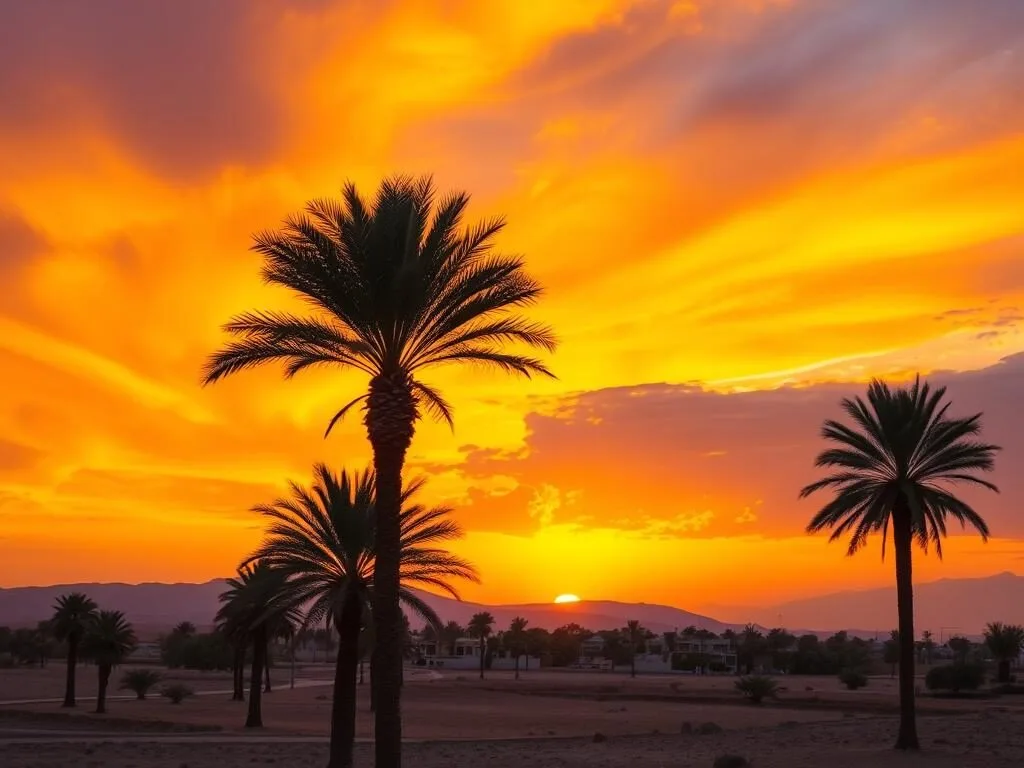
Getting Around Locally
Ibri is a relatively small town, but the archaeological sites and attractions are spread out across the surrounding area. Having your own transportation is highly recommended.
Rental Cars
The most convenient way to explore Ibri and its surroundings is by rental car. This gives you the freedom to visit remote archaeological sites and wadis at your own pace. Four-wheel drive vehicles are recommended for exploring off-road areas.
Explore at Your Own Pace
Book a reliable rental car to discover all that Ibri has to offer.
Taxis
Local taxis can be hired for day trips around Ibri. Negotiate the fare in advance and consider hiring the same driver for multiple days if you plan to explore extensively.
Walking
The central area of Ibri is walkable, but the summer heat makes this impractical during much of the year. Walking is best limited to early mornings or evenings, particularly from October to March.
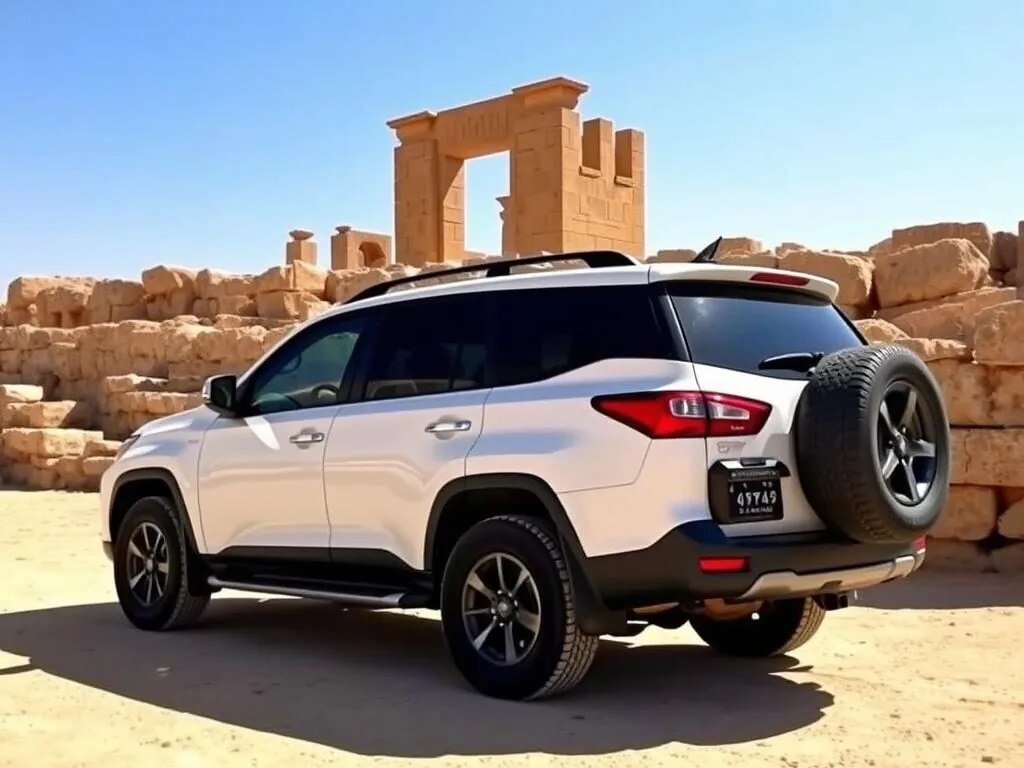
Where to Stay in Ibri
Ibri offers a limited but adequate selection of accommodations, from modern hotels to more budget-friendly options. Most are concentrated in the town center, making them convenient bases for exploring the region.
Luxury Options
- Royal Vista Hotel – Modern 4-star hotel with excellent amenities, restaurant, and spacious rooms
- Ayla Ibri Hotel – Contemporary accommodation with swimming pool and fitness center
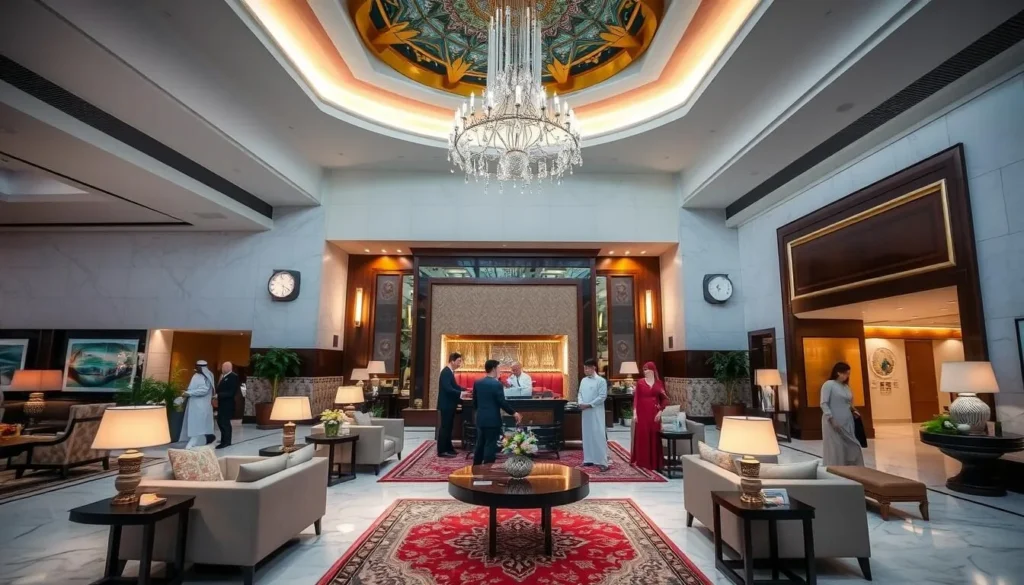
Mid-Range Options
- F&M Grand Hotel – Comfortable rooms with good amenities and central location
- Remal Ibri Hotel – Clean, well-maintained property with friendly service
- Ibri Castle Hotel – Traditional styling with modern comforts

Budget Options
- Ibri Oasis Hotel – Basic but clean accommodations at affordable rates
- Al Majid Hotel Apartments – Self-catering options for longer stays
Booking Tip: Accommodations in Ibri can fill up during regional events and holidays. Book in advance, especially if traveling between October and March.
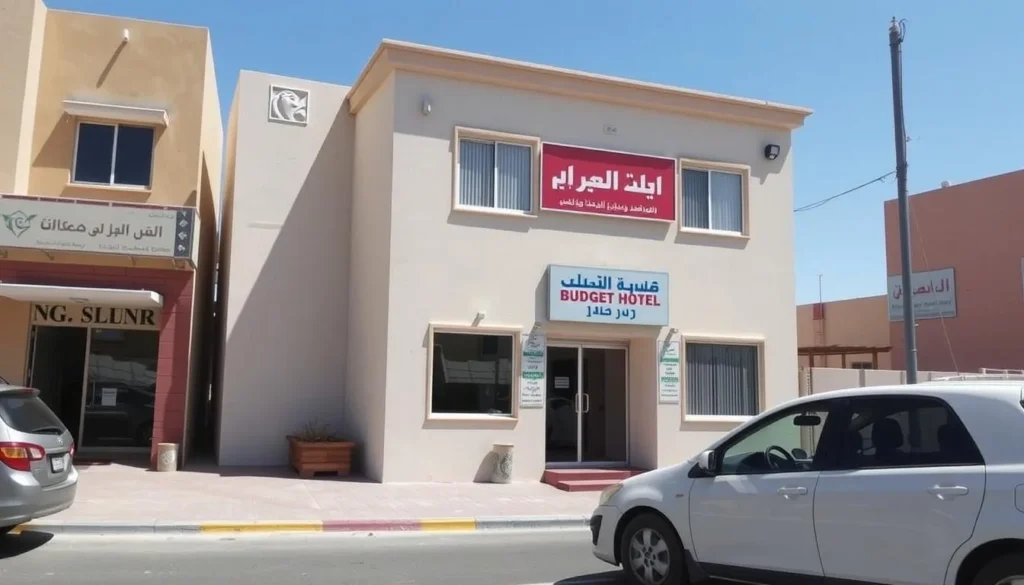
Top Attractions & Things to Do in Ibri
Historical & Archaeological Sites
1. Bat Necropolis (UNESCO World Heritage Site)
Located just a few kilometers from downtown Ibri, this remarkable archaeological site features numerous “beehive” tombs dating back to the 3rd millennium BCE. The site contains some of the most complete and well-preserved ancient burial structures in the world.
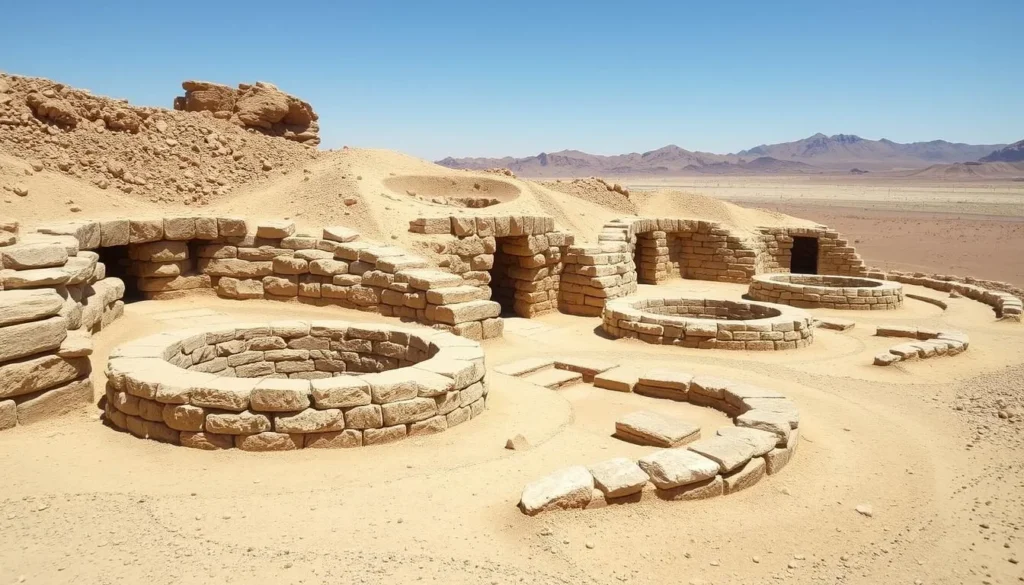
2. Ibri Castle
This historic fortress features a compound wall, tall tower, two wells, and a horse stable. The castle’s mosque is one of the oldest working mosques in Oman. Don’t miss the famous “Sabah” gates, which showcase traditional Omani craftsmanship.
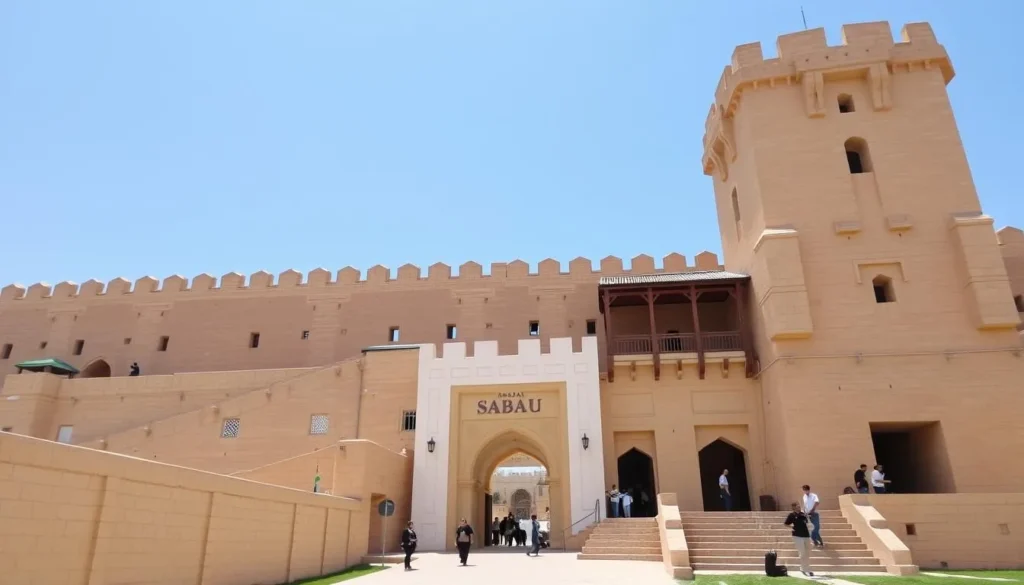
Explore Ibri’s Historical Treasures
Book a guided tour to fully appreciate the rich history and archaeological significance of these ancient sites.
3. Al Sulaif Ancient Village
This abandoned fortified village dates back to the 11th century. Wander through the narrow streets and climb to the top of the walls for panoramic views of Wadi Sulaif. The site offers excellent photography opportunities, especially during golden hour.
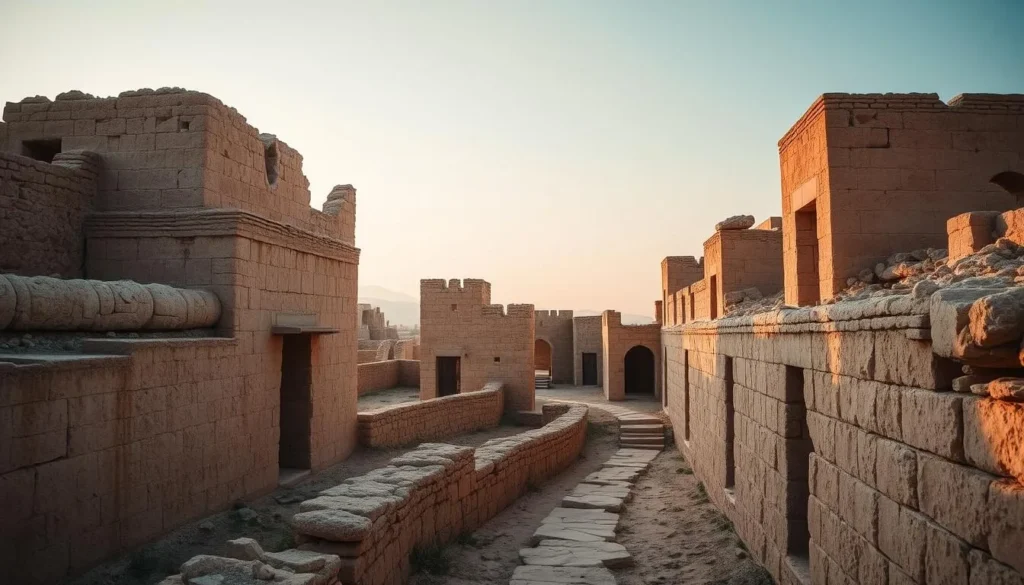
Natural Attractions
4. Unexplored Wadis
The outskirts of Ibri feature numerous wadis (dry riverbeds) that are perfect for camping, bouldering, and trekking. These relatively undiscovered natural areas offer a glimpse into Oman’s diverse landscapes and provide excellent opportunities for adventure seekers.
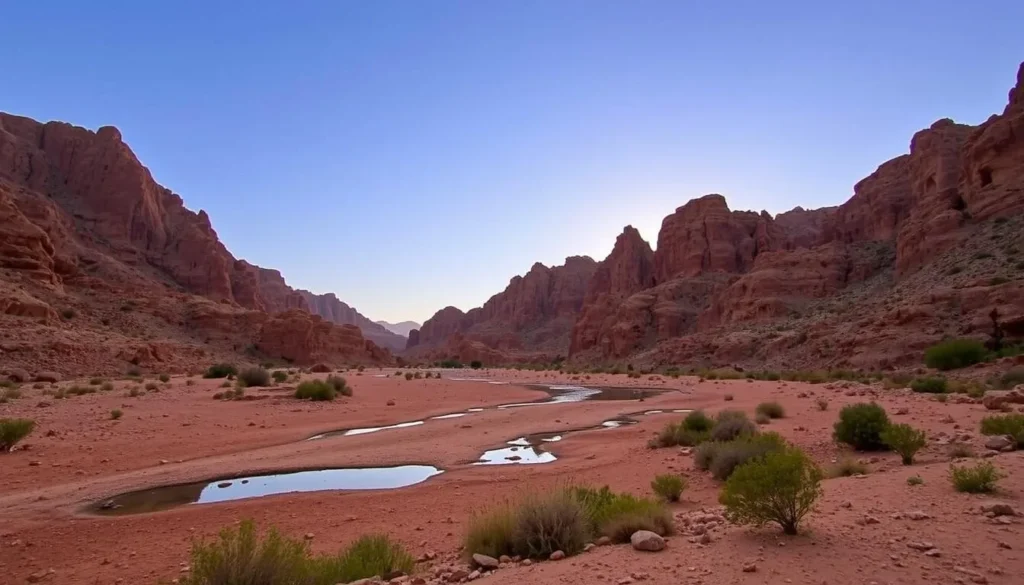
5. Old Ibri Souq
Experience local culture at the traditional market where you can find handmade artifacts, fresh fruits, and interact with friendly locals. The souq provides insight into daily life in this oasis town and offers opportunities to purchase authentic Omani crafts.
Dining & Local Cuisine
Ibri offers a variety of dining options, from traditional Omani cuisine to international fare. Many restaurants are located near the town center and major hotels.
Must-Try Omani Dishes
- Shuwa – Slow-cooked marinated meat, traditionally prepared in an underground sand oven
- Majboos – Spiced rice dish with meat, similar to biryani
- Harees – Wheat mixed with meat, slow-cooked until it forms a thick porridge
- Omani Halwa – Sweet gelatinous dessert flavored with saffron, cardamom, and nuts

Recommended Restaurants
- Arab World Restaurant – Popular local establishment serving authentic Omani cuisine
- Al Yahar Restaurant – Located on Ibri-Hafeet Road, known for its mixed grills and Arabic dishes
- Domino’s Pizza – For those craving familiar international options
- Indian restaurants – Several small eateries offering Kerala-style cuisine
Dining Tip: Most restaurants in Ibri are closed during prayer times. Plan your meals accordingly, especially during lunchtime when the midday prayer coincides with typical lunch hours.
Practical Travel Tips
Safety & Etiquette
- Dress modestly, covering shoulders and knees out of respect for local customs
- Ask permission before photographing local people
- Avoid public displays of affection
- During Ramadan, refrain from eating, drinking, or smoking in public during daylight hours
- Summer temperatures can reach 50°C (122°F) – take necessary precautions against heat stroke
Money & Shopping
- The currency is the Omani Rial (OMR), which is divided into 1000 baisa
- ATMs are available in Ibri town center
- Credit cards are accepted at hotels and larger restaurants but carry cash for smaller establishments
- The Old Ibri Souq is the best place for souvenirs and local crafts
- Consider purchasing an authentic Omani dagger (khanjar) as a memorable souvenir
Communication
- Arabic is the official language, but basic English is understood in tourist areas
- Learning a few Arabic phrases will be appreciated by locals
- Mobile coverage is good in Ibri town but may be limited in remote areas
- Local SIM cards can be purchased for data and calls
- Internet access is available at most hotels
Ready to Explore Ibri?
Ibri offers a fascinating glimpse into Oman’s rich history and culture, away from the more touristy coastal areas. With its UNESCO World Heritage sites, ancient fortresses, traditional markets, and stunning natural landscapes, this oasis town provides an authentic Omani experience for travelers seeking to venture beyond the usual tourist trail.
Whether you’re an archaeology enthusiast, a cultural explorer, or simply looking to experience a different side of Oman, Ibri rewards visitors with its historical treasures and warm hospitality. The best part? You’ll likely have many of these remarkable sites almost to yourself.
Plan Your Ibri Adventure Today
Start by booking your flights, accommodations, and transportation to experience this hidden gem of Oman.
The above is subject to change.
Check back often to TRAVEL.COM for the latest travel tips and deals.






